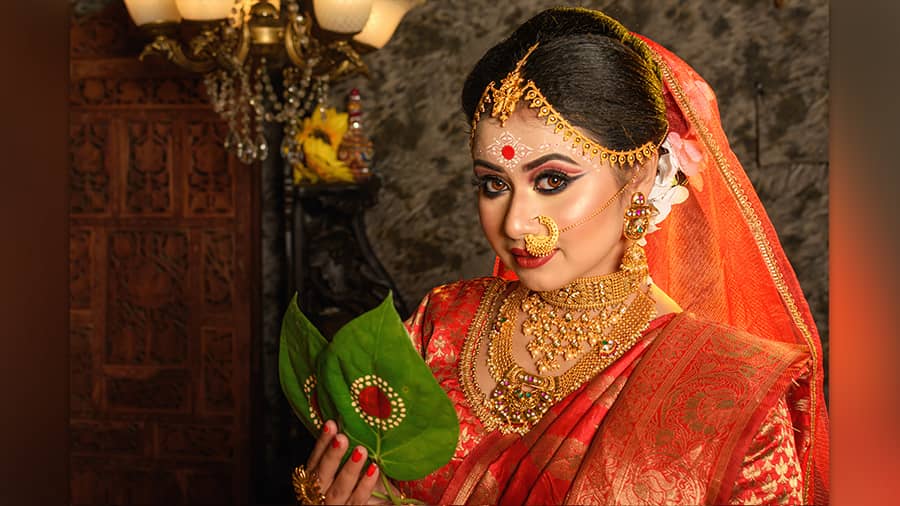The bride’s sari on the D-day is as diverse in India as the cultures and traditions of its 28 states and eight Union Territories. So, while the traditional Bangali bou is almost always dressed in tutktuke lal (red), the Kerala bride wears white and the Maharashtrian vadhu wears green or yellow.
My Kolkata takes a look at the traditional wedding saris of some states of India. And, if you are tying the knot this wedding season, you can take your pick from any one of these to stay traditional and yet different
Andhra Pradesh
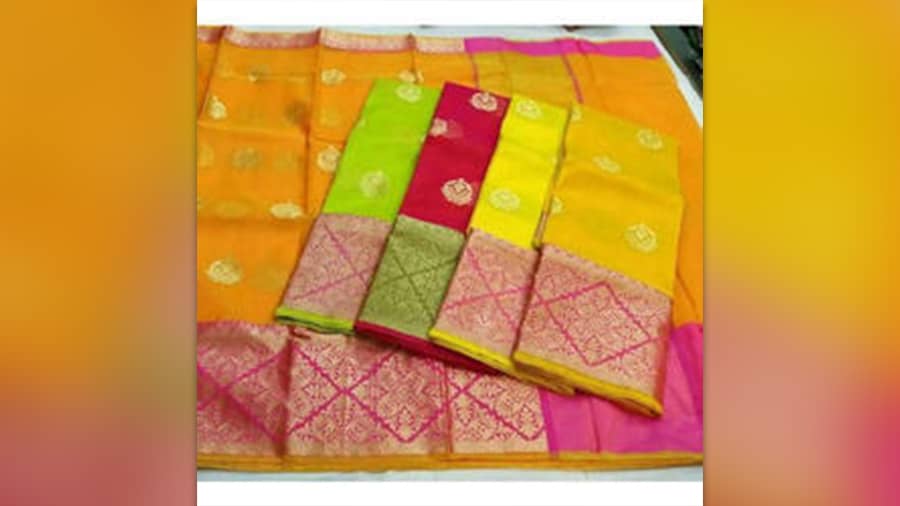
IndiaMART
Like most southern states, Andhra Pradesh, too, has a rich tradition of looms and saris from Pochampally to Gadwal and Venkatgiri. But when it comes to weddings, it has to be a Dharmavaram. The saris are woven in rich silk with intricately woven flora and fauna motifs inspired by the murals and paintings of the Lepakshi Temple in Hindupur located in Anantapur district. Use of gold, silver, green and red make the saris magnificently gorgeous and just right for weddings. On the wedding day, the bride also wears a cotton sari with red border and the groom wears a white dhoti with a red border.
Gujarat
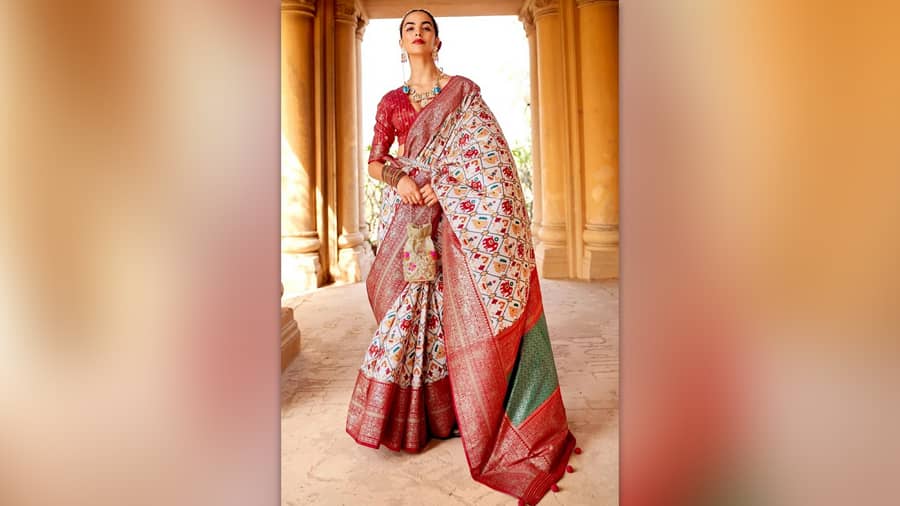
SAREE.COM
The Panetar and Gharchola are closely associated with Gujarati weddings. The Panetar is a silk sari with white and red borders. These saris are usually made of Gaji silk with zari work. The bride also wears a Gharchola — a red silk sari with golden zari squares and white bandhni designs.
Talking of Gujarat, a mention of Patola saris is a must. These double ikkat silk saris are woven in the Patan region of Madhya Pradesh and often given to brides of Gujarat as streedhan. These heirloom saris are passed over from one generation to the next. The squares or the box patterns in the sari depict security. Patterns of elephant, peacock, kalash (jug) and others are symbolic of good luck for women. The saris are also considered as a mark of social prestige.
Kerala
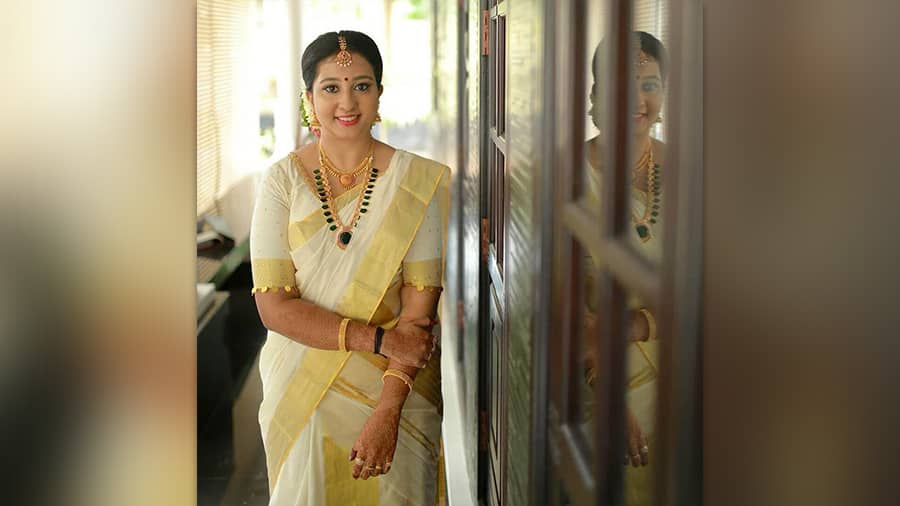
shaadiwish.com
The brides of Kerala are usually seeing wear white saris with golden borders. The Kasavu has long crossed the state’s borders and turned into a must-have for most sari-wearing women across the country. The saris are woven in silk and cotton with gold zari in the border. The history of Kasavu sarees can be traced back to the Buddhist era. Traditionally gold and silver threads were used. These have now been replaced with zari. Though the sari is now woven in different parts of south India, there are villages in Kerala devoted entirely to weaving Kasavu. One of them is a village named Kuthampully where the entire population is engaged in weaving Kasavu. It is not only worn on weddings but on many other auspicious occasions or festivals as well. Men, too, wear Kasavu.
Madhya Pradesh
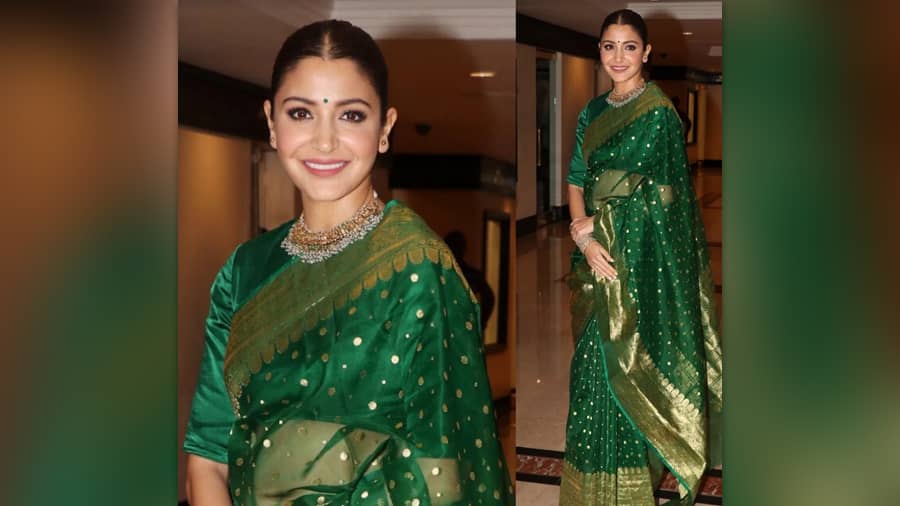
Anushka Sharma flaunts a Chanderi Etsy
Though the brides of this region usually wear ghagra choli, saris are also popular. Chanderi saris are a must-have in weddings.Chanderi got its name from its region of origin, Chanderi. The fabrics used are silk, cotton and silk cotton. In the 13th century, Koshti weavers from Jhansi migrated to Chanderi and started to weaving these saris. There was a surge in demand during the Mughal period. The saris are light and have a fine luxurious feel. The fabric along with zari give a very subtle shimmer to the saris. Popular motifs include floral, peacock, geometric designs, butas.
Maharashtra

indiamart
Woven in Paithan town of Aurangabad, a Maharastrian bride’s trousseau is incomplete without a Paithani sari. Presently Yeola town of Maharashtra is said to be the largest manufacturer of Paithani saris. The oblique square designs and the peacock motif is typical of the Paithani. Lotus motifs, swan motifs and others are also woven. A very demanding border of the Paithani sari is the muniya (a kind of parrot) that is typically woven on the border of the sari. Usually made of fine quality silk, now cotton varieties are also available. There was a time when silk was imported from China to weave the sari. The saris worn by the brides are usually green or yellow in colour.
For the wedding rituals, Maharshtrian brides traditionally wear the Nauvari or nine-yard sari. It is a traditional drape of the state. Worn in dhoti style, the sari is a must have for any Maharashtrian woman. A stitched version is also available now.
Odisha
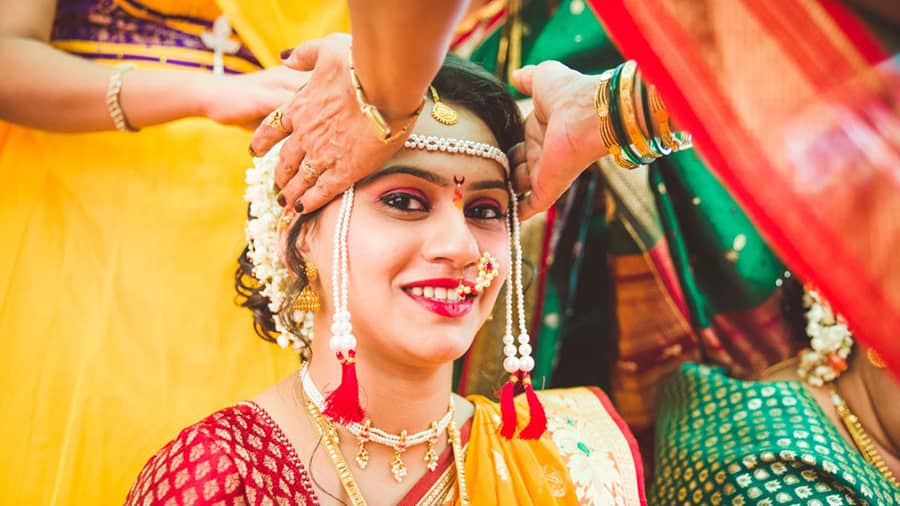
In a traditional Odiyta wedding, the bride wears a Baula Patta. The saris are yellow in colour with red borders. Now red, pink and orange saris are also available. The saris have ornate designs made with zari giving a rich look.
Tamil Nadu
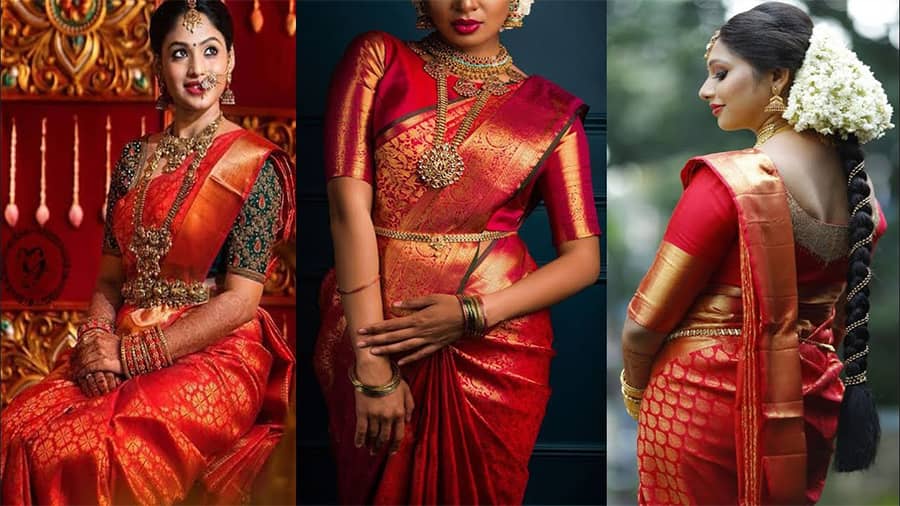
A Kanchipuram sari FASHION TRENDS/YouTube
The brides of the state wear bright-coloured Kanjivaram or Kanchipuram saris for their wedding. Kanjivaram saris are said to be woven by the descendants of Sage Markanda who was considered the master weaver othe gods. The saris are made in a place named Kanchipuram in Tamil Nadu. Kanchipuram saris received GI tags in 2005-2006. The saris are woven on mulberry silk thread and have heavy zari work on them. Temple borders, stripes, butas are popular designs. The saris are heavy. Koorai Pattu Pudavai is a very traditional sari that is also worn during weddings by some communities.
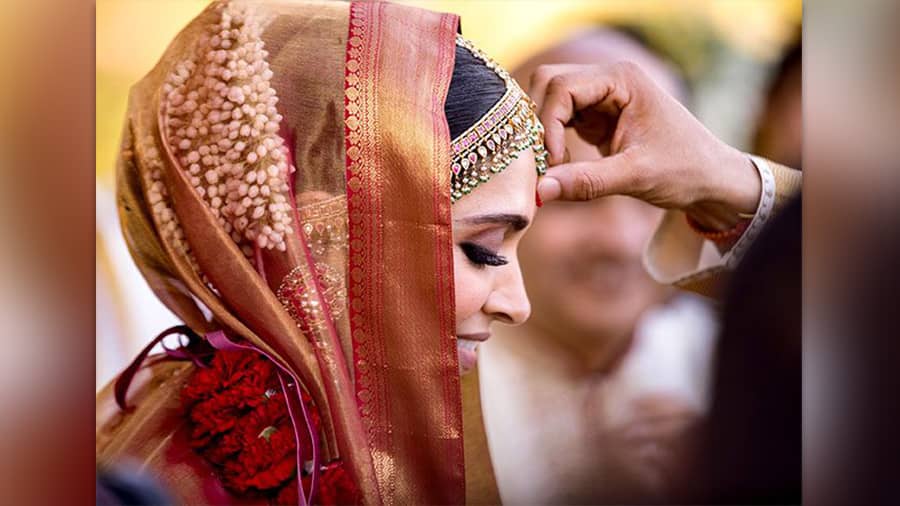
Deepika Padukone in a Kanjivaram Deepika Padukone/Instagram
West Bengal
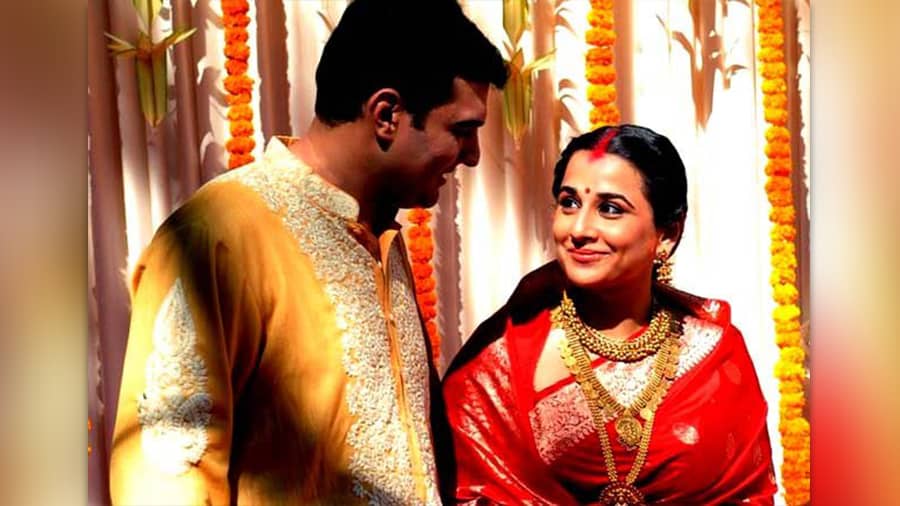
Vidya Balan in a red Benarasi India TV
One of the most sought-after wedding sari in Bengal is the Benarasi. A Bengali bride's trousseau is incomplete without a Benarasi sari. Though many colours are available, typically a Bengali bride is seen wearing red Benarasi on her wedding day.
Woven in different districts of Benares, Uttar Pradesh, the intricate grandeur of the sari makes it stand apart from all other saris. Not only in Bengal, Benarasi has a global presence. Though a lot of materials are now used in weaving, the traditional ones were usually made of finely woven silk. There are different varieties of Benarasi like the katan, kora and georgette. The designs are woven with silver or gold zaris. There was a time when zaris made from gold and silver were used. These saris run down in the family through generations. The pattern or the design of the saris vary. Brocades are very popular. Other than floral or foliate, paisley and butas are popular motifs. Benaras received GI tag for saris in 2009.
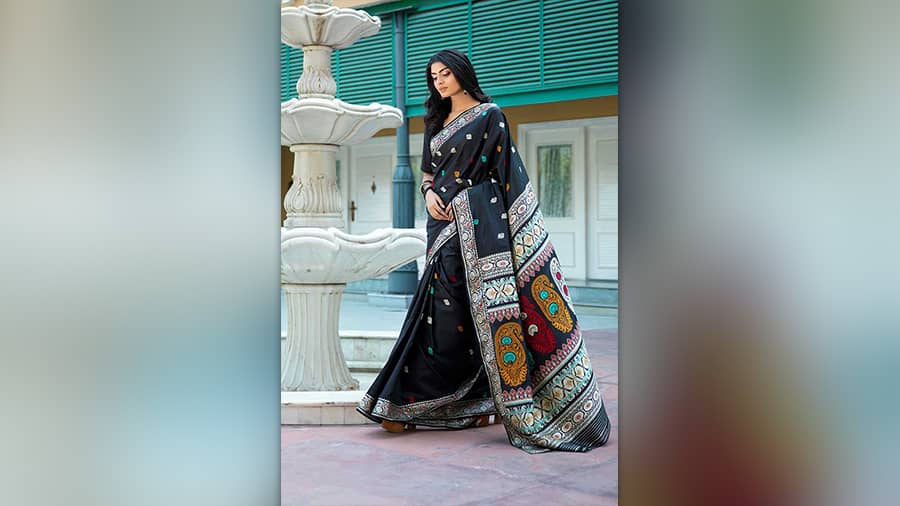
A Baluchari sari oleefashion.com
Bengal’s own Swarnachari and Baluchari saris have a huge demand in the wedding market. Many Bengali brides wear these for the reception ceremony. Made in Bishnupur, the saris are made of silk. While the Baluchari has thread motifs, Swarnachari saris have golden zari motifs.

A Swarnachari sari Buddha and Beyond
Though Mughal motifs were initially popular, but gradually stories from Mahabharata and Ramayana started to take over. Aam kalka is another sought-after motif. The Mughal designs now woven as revival Balucharis are also much in demand.
